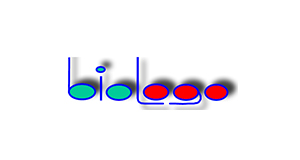Cytokeratin 13
Cytokeratin 13, IgG1, Host: Mouse, Monoclonal, Clone: Ks13.1
Artikelnummer
BILCK113
Verpackungseinheit
1 ml
Hersteller
BioLogo
Verfügbarkeit:
wird geladen...
Preis wird geladen...
Clone: Ks13.1.
Background: Cytokeratin 13 is an acidic filament protein, which especially exprimed in squamous epithelia. Therefore it is found in exocervix, vagina, oral mucosa, tongue, oesophage, epidermis and urothelium. The CK13 antibody mainly reacts with squamous epithelia and squamous cell carcinoma. Cytokeratins are a group of water soluble filament proteins, which are components of the cytoskeleton of the epidermis and other epithelial cells. Gel-electrophoretic investigation revealed 20 different Cytokeratins, characterised by different molecular sizes and pI-values. They can be subdivided into basic and acid subfamilies. The nomenclature according to Moll et al. (1982) is most commonly used. Acid Cytokeratin 13, 54 kD, pI 5.1.
Positive Control: Urothelial carcinoma.
Immunogen: Human purified Cytokeratin 13.
Purification Method: Antibody solution in stabilizing phosphate buffer pH 7.3. Contains 0.09 % sodium azide**. The volume is sufficient for at least 50 immunohistochemical tests (100 µl working solution / test). Use appropriate antibody diluent e.g. BIOLOGO Art. No. PU002, if further dilution is required.
References: 1. Moll R., Franke W.W., Schiller D.L., Geiger B., and Krepler R. (1982) The Catalog of Human Cytokeratins: Patterns of Expression in Normal Epithelia, Tumors and Cultured Cells. Cell 31; 11 ff. 2. Sun T.-T. Tseng S.C.G., Huang A.J.W., Cooper D., Lynch M.H., Weiss R., Eichner R., and Schermer (1985) Monoclonal antibody studies of keratin expression: A review. In: Intermediate Filaments , Wang E. et al. eds. N.Y. Acad. Sci. 455, pp 307 ff. 3. Petzoldt JL, Leigh IM, Duffy PG, Masters JR (1994) Culture and characterisation of human urothelium in vivo and in vitro. Urol Res;22(2):67-74 4. Rugg E, Magee G, Wilson N, Brandrup F, Hamburger J, Lane E (1999) Identification of two novel mutations in keratin 13 as the cause of white sponge naevus. Oral Dis 5(4):321-324. 5. De La Rosette J., Smedts F., Schoots C., Hoek H., and P. Laguna (2002) Changing patterns of keratin expression could be associated with functional maturation of the developing human bladder. J. Urol. 168(2); 709-717.
UniProt: P13646.
Caution: *These antibodies are intended for in vitro research use only. They must not be used for clinical diagnostics and not for in vivo experiments in humans or animals. ** The preservative sodium azide is known to be poisonous and potentially hazardous to health. It should be handled only by trained staff. Despite of the product's low azide concentration it must be handled with care. Dispose according to regional rules!
Background: Cytokeratin 13 is an acidic filament protein, which especially exprimed in squamous epithelia. Therefore it is found in exocervix, vagina, oral mucosa, tongue, oesophage, epidermis and urothelium. The CK13 antibody mainly reacts with squamous epithelia and squamous cell carcinoma. Cytokeratins are a group of water soluble filament proteins, which are components of the cytoskeleton of the epidermis and other epithelial cells. Gel-electrophoretic investigation revealed 20 different Cytokeratins, characterised by different molecular sizes and pI-values. They can be subdivided into basic and acid subfamilies. The nomenclature according to Moll et al. (1982) is most commonly used. Acid Cytokeratin 13, 54 kD, pI 5.1.
Positive Control: Urothelial carcinoma.
Immunogen: Human purified Cytokeratin 13.
Purification Method: Antibody solution in stabilizing phosphate buffer pH 7.3. Contains 0.09 % sodium azide**. The volume is sufficient for at least 50 immunohistochemical tests (100 µl working solution / test). Use appropriate antibody diluent e.g. BIOLOGO Art. No. PU002, if further dilution is required.
References: 1. Moll R., Franke W.W., Schiller D.L., Geiger B., and Krepler R. (1982) The Catalog of Human Cytokeratins: Patterns of Expression in Normal Epithelia, Tumors and Cultured Cells. Cell 31; 11 ff. 2. Sun T.-T. Tseng S.C.G., Huang A.J.W., Cooper D., Lynch M.H., Weiss R., Eichner R., and Schermer (1985) Monoclonal antibody studies of keratin expression: A review. In: Intermediate Filaments , Wang E. et al. eds. N.Y. Acad. Sci. 455, pp 307 ff. 3. Petzoldt JL, Leigh IM, Duffy PG, Masters JR (1994) Culture and characterisation of human urothelium in vivo and in vitro. Urol Res;22(2):67-74 4. Rugg E, Magee G, Wilson N, Brandrup F, Hamburger J, Lane E (1999) Identification of two novel mutations in keratin 13 as the cause of white sponge naevus. Oral Dis 5(4):321-324. 5. De La Rosette J., Smedts F., Schoots C., Hoek H., and P. Laguna (2002) Changing patterns of keratin expression could be associated with functional maturation of the developing human bladder. J. Urol. 168(2); 709-717.
UniProt: P13646.
Caution: *These antibodies are intended for in vitro research use only. They must not be used for clinical diagnostics and not for in vivo experiments in humans or animals. ** The preservative sodium azide is known to be poisonous and potentially hazardous to health. It should be handled only by trained staff. Despite of the product's low azide concentration it must be handled with care. Dispose according to regional rules!
| Artikelnummer | BILCK113 |
|---|---|
| Hersteller | BioLogo |
| Hersteller Artikelnummer | CK113 |
| Green Labware | Nein |
| Verpackungseinheit | 1 ml |
| Mengeneinheit | STK |
| Reaktivität | Human, Rat (Rattus), Cow (Bovine) |
| Klonalität | Monoclonal |
| Methode | Immunohistochemistry (frozen), Immunohistochemistry (paraffin) |
| Isotyp | IgG1 |
| Wirt | Mouse |
| Produktinformation (PDF) | Download |
| MSDS (PDF) | Download |

 English
English







